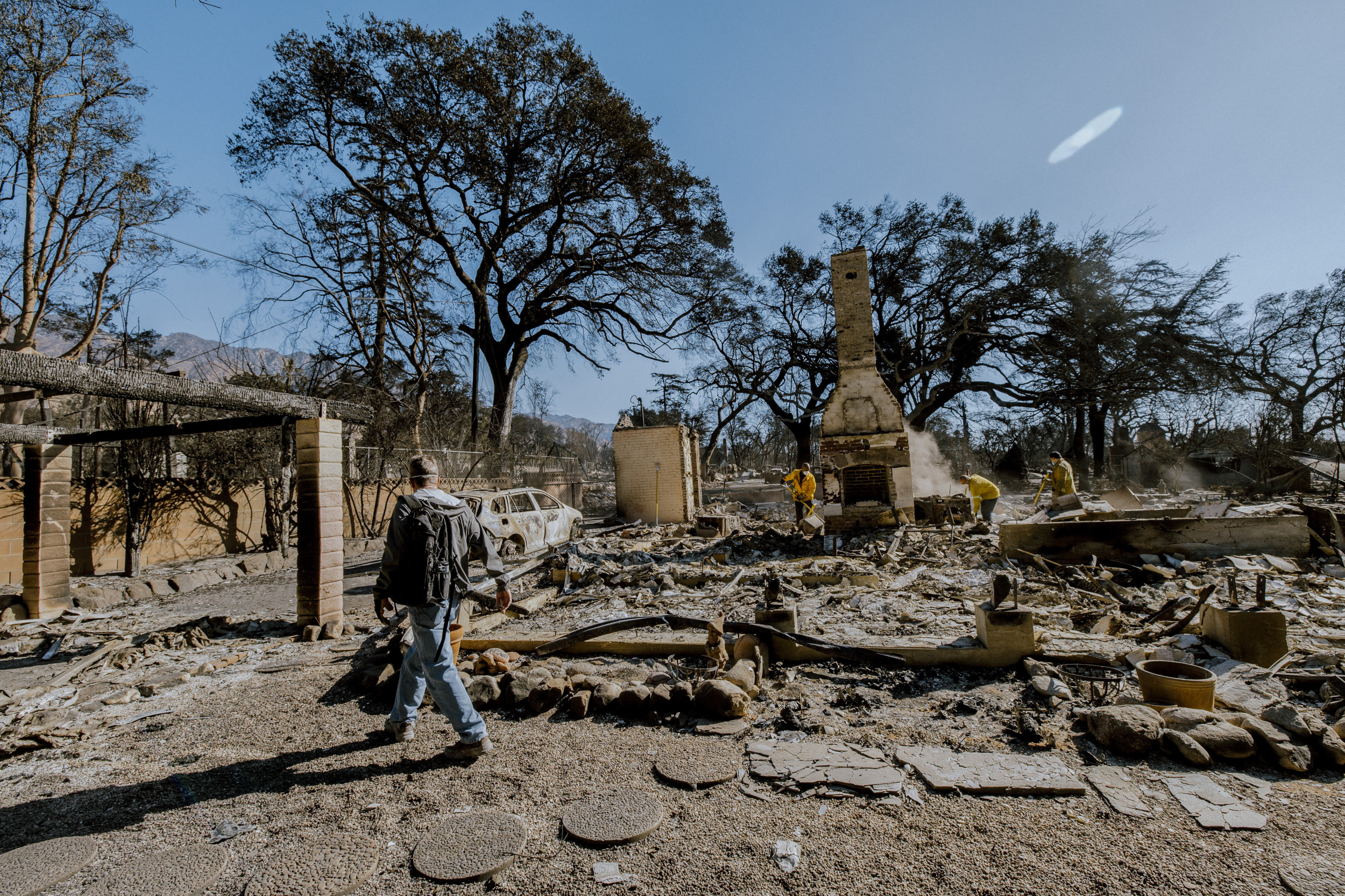Part of a continuing weekly series on Alaska history by local historian David Reamer. Have a question about Anchorage or Alaska history or an idea for a future article? Go to the form at the bottom of this story.
Early the morning of Dec. 3, 1923, a slight, disheveled German man stumbled through the door of the United States marshal’s office in Anchorage. Frozen blood clung to his face from three fresh cuts. It had already been an eventful night for the deputy marshal on duty, Charles Watson. Only three hours earlier, he had investigated a daring assault and robbery at a cabin in town. His newest visitor, Paul Fromming, declared, “I want to see (deputy marshal) Frank Hoffman. I’m in trouble. I just killed John and Alex Vanaja.”
Even before the deaths of the Vanaja brothers, Fromming possessed a less-than-sterling reputation around Anchorage. Born in 1875, he hailed from the Pomerania region in what is now Poland but was then Germany. Throughout his life, he described himself as German. He first visited the United States in 1893 after a stint in the German army. After six months, he returned home but immigrated for good in 1806, landing in New Jersey. He spent some time in Iowa and, in 1907, worked his way north to Alaska. Working primarily as a woodcutter, he bounced between Fairbanks and Tanana before establishing a homestead outside Anchorage, near Eagle River.
Around Anchorage, Fromming was the type of person who always had an excuse and was always right about to do the thing he promised. His achievements were forever just out of reach. He would claim he was ready to prove up on the homestead and claim the deed to the land but never did. In at least 1905, 1919, and 1923, he swore he was about to become naturalized as an American citizen but never followed through.
His Eagle River homestead was conveniently far from prying eyes. While he still listed his profession as a “wood chopper,” he made far more money from an illegal moonshine operation. As the Anchorage Daily Times reported in 1921, “It is reliably reported that Fromming’s product was above the ordinary and made from corn.” He was busted that year and served five months of a six-month sentence in jail. Two years later, he was still a reputed bootlegger.
The Vanaja brothers were Finnish immigrants. John was born in 1885 and immigrated to America in 1912. By 1923, he had lived at his own Eagle River homestead with his wife Hilja and son Reino for several years. Their farm was less than a mile from Fromming; they were each other’s closest neighbors. Alex was born in 1894, immigrated to America in 1923, and arrived in Anchorage three months before his death.
For a small town of around 2,000 inhabitants, Anchorage possessed a significant Finnish population, including the Aho, Enatti, Niemi, Ohls, Stolt, and Wahl families. William “Bill” Stolt (1900-2001) was Mayor of Anchorage from 1941 to 1944. Finnish language revivals in 1923, the same year as the Vanaja murders, evolved into the Anchorage Suomi Finland Club, still going strong a century later.
Fromming and the Vanajas had been on friendly-enough terms, but the relationship turned frosty a few months before the final confrontation. Young Reino Vanaja stated that Fromming “stopped coming to our house,” though he did not know why. Fromming later intimated his belief to the Daily Times that John had been stealing tools whenever Fromming headed into town. Fromming installed signs warning against trespassing on his property, but they were destroyed or removed. In October 1923, two months before the deaths, he placed notices in the Daily Times offering a $50 — almost $900 in 2023 money — reward for information leading to the arrest and conviction of those removing his signs.
Fromming also began to resent the Vanajas for speaking Finnish around him. Alex, new to the country, did not speak English and conversed with his brother in their native language. Each time they did that around Fromming, he assumed they were insulting him. The Vanajas “were always jabbering in Finn; I thought they were talking about me,” said Fromming. Perhaps the German-born Fromming should have been more understanding of a fellow immigrant, but such was his personality.
Around 10 p.m. on Dec. 2, 1923, Fromming was preparing for bed when someone knocked loudly on his door. He told the Daily Times, “My dog barked and I should have looked, but I didn’t.” After he opened the door, John and Alex Vanaja pressed their way inside. They did not ask permission, but the door was open, and it was winter after all. In his initial statement at the marshal’s office, Fromming said, “They were about three-fourths drunk and they were hunting trouble.”
Fromming continued, “John demanded moonshine. He said, ‘You got moonshine here, you got plenty of it?’ I told him I didn’t have any booze, but he said, ‘Yes you have — you got moonshine all right.’ I told him, ‘If you say I have moonshine you are a liar!’ There were sitting down, but one them got up. My cabin has two rooms. I went into the other room and got my thirty-thirty rifle. Then I ordered them to leave my house. I told them I’d shoot if they didn’t leave.”
John Vanaja uttered his last words, “You are a G– d— coward; you wouldn’t shoot nobody.” Fromming fired one shot from his rifle, killing John. Alex blew out the oil lamp, the only light source in the small cabin, and the two men wrestled for their lives in the dark. During the desperate tussle, Alex gouged Fromming twice on the forehead and once over his left eye, the open wounds visible when Fromming arrived at the marshal’s office. Fromming had no more shots in his rifle but grabbed at his pistol. As he told the deputy marshal, a “chance shot” from several feet away killed Alex immediately. After a body thumped against the floor in the darkness, Fromming relit the lamp and surveyed the scene. About five hours later, he turned himself in at the marshal’s office.
Neither Vanaja brother was armed. Alex’s wound undermined Fromming’s version of the events. The .32 caliber shot left powder burns on Alex’s heavy Mackinaw coat. The heat from the discharge carried through that coat, an inner jacket, and two shirts before searing the flesh around the entry wound. Rather than firing from seven feet away, as Fromming claimed, the pistol had likely been pressed against Alex when the trigger was pulled.
John’s wife and son were in town for a movie at the time of the altercation. The house was dark and empty when they returned home, but they thought nothing of it and went to sleep. Carriers of the bad news woke them early the following morning. When they viewed the bodies at the morgue, the 13-year-old Reino held back his tears but shouted, “He needn’t have done that — there was no need for it.”
Fromming was charged with two counts of first-degree murder and was held without bail until his case could be tried. For a supposedly humble woodcutter, he was able to hire the most prominent local attorneys, the firm of L.V. Ray and former Anchorage Mayor Leopold David.
The first trial, for the death of Alex, began six months later, on June 9, 1924, in Valdez. Fromming took the stand on the first day. Emotional and barely audible, he repeated that he had had no other alternative, that he acted only in self-defense. In his closing argument, Ray stated that a person did not have to wait until the last moment to defend themselves but could act when threatened with imminent physical harm.
After a day and a half, the determination was passed to the jury. Nearly 12 hours passed before they returned with a verdict. While Fromming had certainly felt threatened, he had killed two unarmed men. The first poll taken by the jury stood nine to three in favor of acquittal. The next ballot increased to 10 in favor of acquittal. Hours later, the holdouts surrendered, and unanimity was achieved. Fromming was found not guilty. The inherent, if macabre, benefit to killing everyone else present for a confrontation is the lack of opposing witnesses.
Fromming wept in relief. The district attorney quickly dismissed the second charge, avoiding the cost to reach the obvious outcome. A tragedy had happened, but there was no justice, only a turning of the page.
John and Alex were buried at the Anchorage Memorial Cemetery, with trees planted in their grave ledgers. Hilja and Reino briefly returned to Finland. Regarding her son, Hilja declared, “Reino is a good boy, a very good boy, and he is going to take the place of his father as our bread-earner.” By October 1924, they were back in Anchorage when she remarried.
After the trial, Fromming disappeared from Anchorage sources. Per the 1930 Census, he was by then living in Tanana, and his residence was still listed there when he committed suicide in 1936. A common misunderstanding of history is that suicides were once considered shameful to the point that they could not be publicly mentioned, that some other cause of death had to be listed. In early 20th-century Alaska, suicides were often published by the local newspapers, sometimes on the front page and with gruesome details on the process involved.
Perhaps he spent the previous 12-plus years haunted by the deaths of the Vanajas. Perhaps he was disabled by age or sickness. He was 60 years old then, single, and showing the wear of a hard life. Or perhaps he was depressed for some unknown reason, not that we will ever know. History can sometimes be unsatisfying like that.
Key sources:
“Fromming Takes Stand; Testifies.” Anchorage Daily Times, June 9, 1924, 4.
“Fromming Was Suspicious of Finn Victims.” Anchorage Daily Times, December 7, 1923, 5.
“‘It Was Them or Me,’ Says Paul Fromming, Slayer of Neighbors.” Anchorage Daily Times, December 4, 1923, 1, 6.
“Jury to Decide Fromming’s Fate.” Anchorage Daily Times, June 10, 1924, 4.
“Jury’s Verdict is ‘Not Guilty.’” Anchorage Daily Times, June 11, 1924, 3.
“Justice Speeds in Today’s Court.” Anchorage Daily Times, June 24, 20.
“Monday Morning Justice.” Anchorage Daily Times, February 14, 1921, 6.
“Paul Fromming Kills Vanaja Brothers, Neighbors After Quarrel Over Moonshine.” Anchorage Daily Times, December 3, 1923, 1.

:quality(70)/cloudfront-us-east-1.images.arcpublishing.com/adn/F4R3XZZIONDPDIU6DJENJVERJI.jpg)



















/cdn.vox-cdn.com/uploads/chorus_asset/file/25822586/STK169_ZUCKERBERG_MAGA_STKS491_CVIRGINIA_A.jpg)

/cdn.vox-cdn.com/uploads/chorus_asset/file/25821992/videoframe_720397.png)



